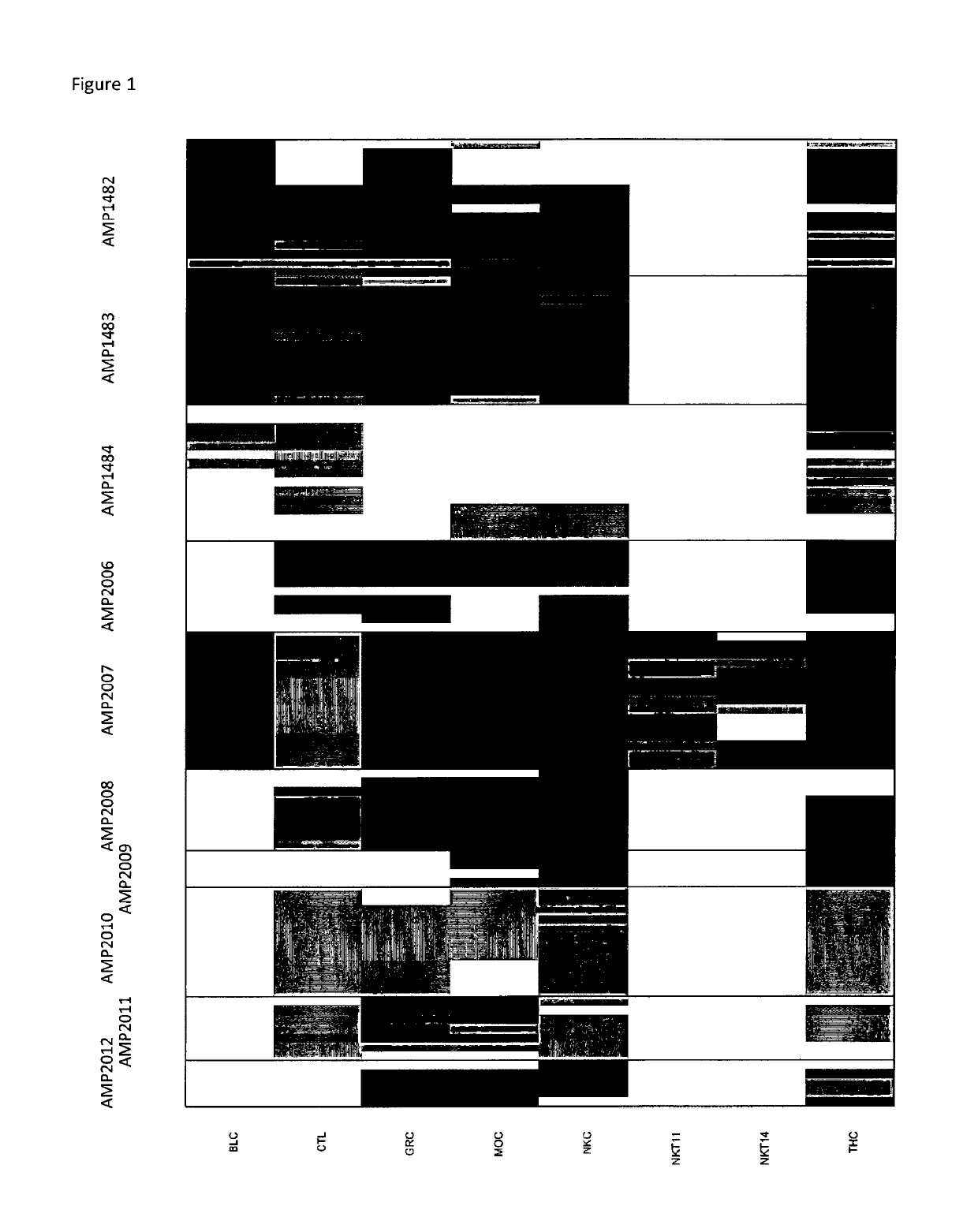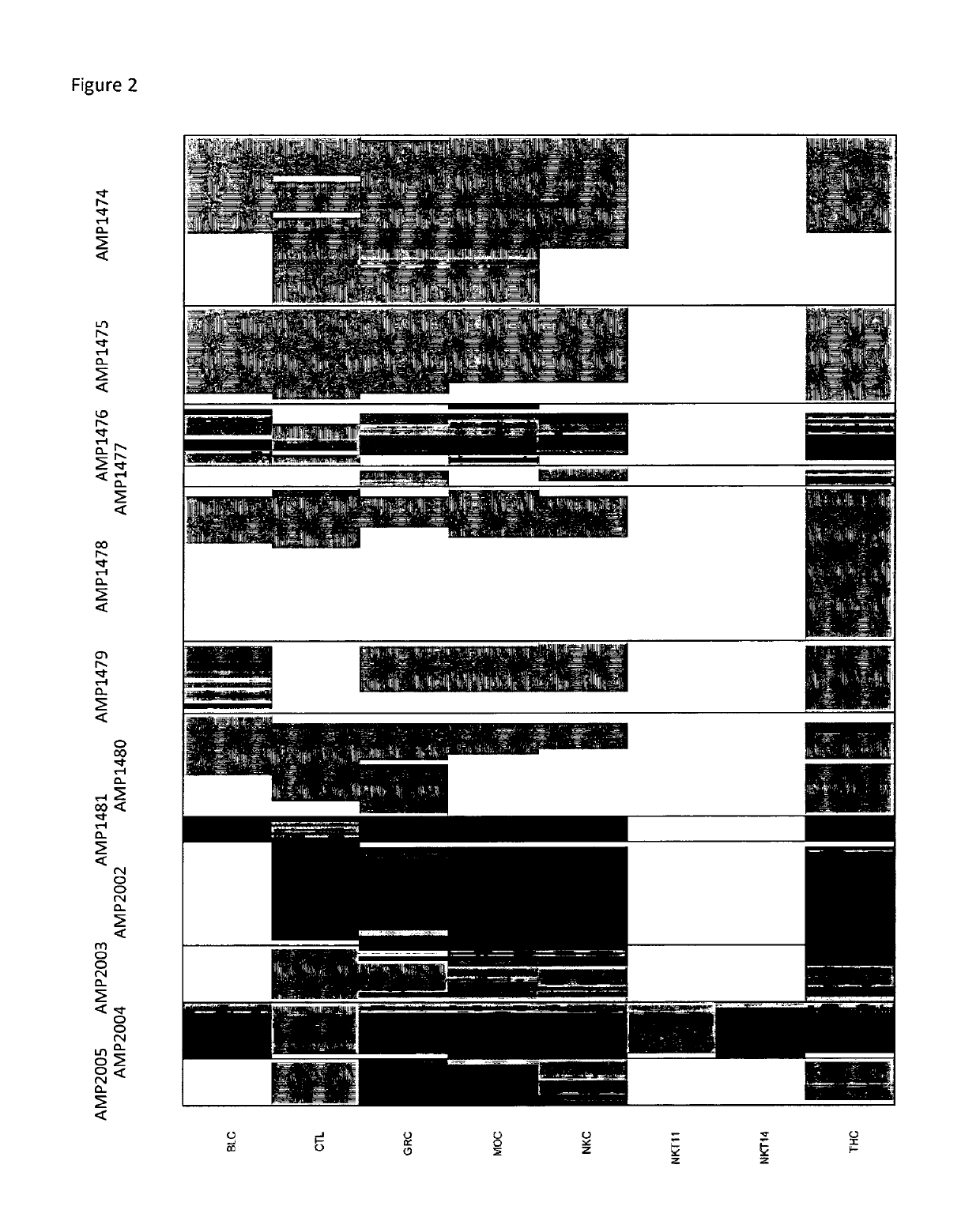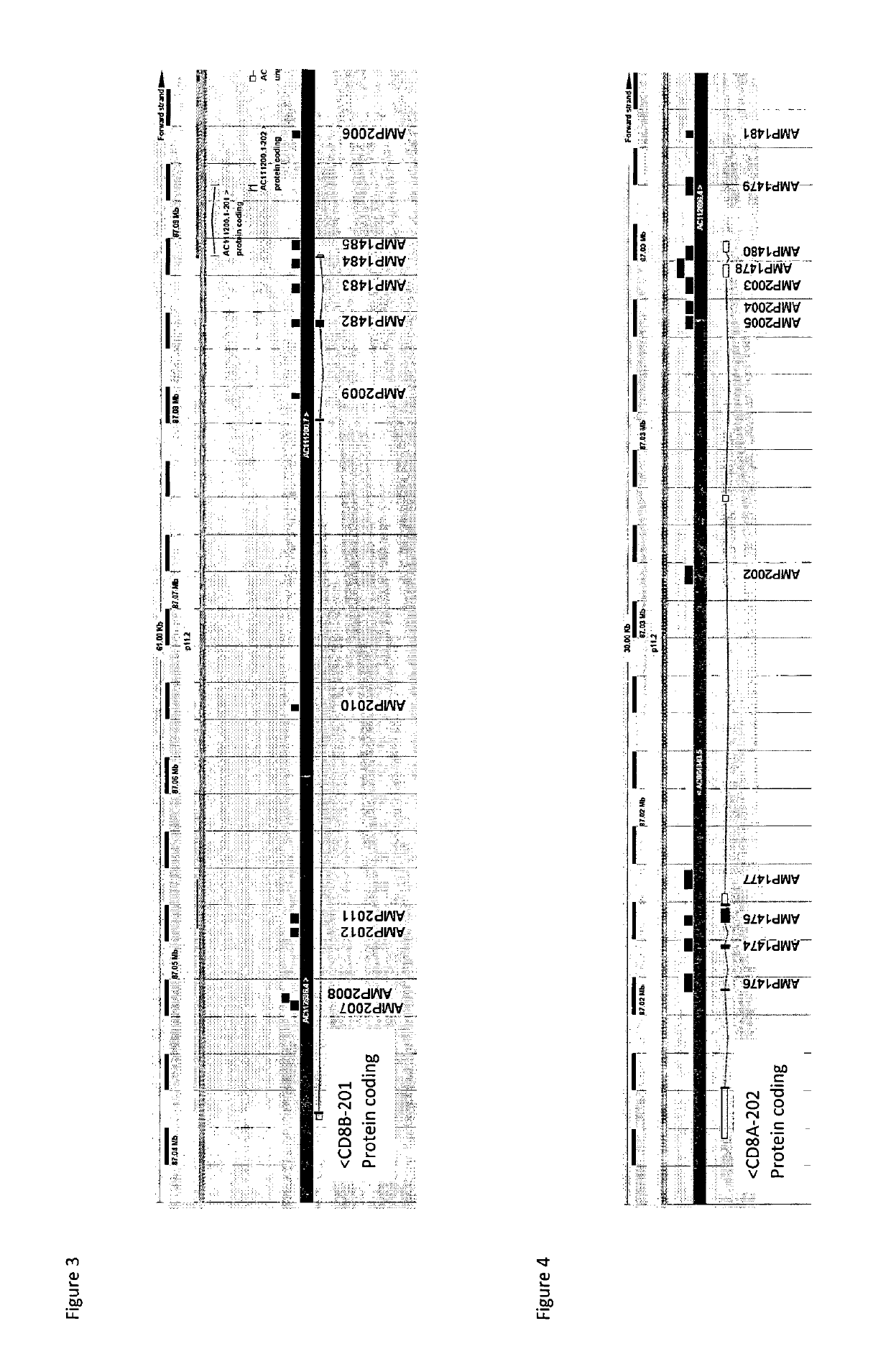Epigenetic method for the identification of subpopulations of CD8+ T lymphocytes, in particular CD8 alpha and beta T lymphocytes
a technology epigenetic methods, which is applied in the field of epigenetic methods for the identification of subpopulations of cd8+ t lymphocytes, can solve the problems of insufficient flow cytometric methods used for the measurement of immune cells in peripheral blood, difficult to meet the precondition of intact cells, and insufficient immunological cells infiltrating other tissues
- Summary
- Abstract
- Description
- Claims
- Application Information
AI Technical Summary
Benefits of technology
Problems solved by technology
Method used
Image
Examples
example 1
[0080]The inventors have purified various blood subsets by FACS sorting including B cells (CD3− CD8−)(BLC), cytotoxic T lymphocytes (CD3+CD8+)(CTL), CD3−CD8− granulocytes (GRC) and CD3−CD8− monocytes (MOC), NK cells (CD3−CD8+)(NKC), NKT cells (CD3+CD8+)(NKT11), CD3+CD8− NKT cells (NKT14), and T helper cells (CD3+CD8−) (THC). DNA from the purified cells was bisulfite-treated and analyzed at various CpG dinucleotide motifs within the CD8 alpha and the CD8 beta gene. The inventors then compared the bisulfite convertibility (T for cytosine that was not-methylated in the original sequence versus finding C as for Cytosine that was methylated in the original (genomic) sequence).
[0081]The CD8 beta data (FIG. 1) showed various CpG positions in the Amp 2007 of CD8 beta gene (see SEQ ID No. 1) that were non-methylated in CD3+CD8+ cytotoxic T-cells and partially non-methylated in CD3+CD8+ NKT cells while methylated in all other analyzed blood cell types. The differentially cytosine modified gen...
PUM
| Property | Measurement | Unit |
|---|---|---|
| total volume | aaaaa | aaaaa |
| nucleic acid based assay | aaaaa | aaaaa |
| current state | aaaaa | aaaaa |
Abstract
Description
Claims
Application Information
 Login to View More
Login to View More - R&D
- Intellectual Property
- Life Sciences
- Materials
- Tech Scout
- Unparalleled Data Quality
- Higher Quality Content
- 60% Fewer Hallucinations
Browse by: Latest US Patents, China's latest patents, Technical Efficacy Thesaurus, Application Domain, Technology Topic, Popular Technical Reports.
© 2025 PatSnap. All rights reserved.Legal|Privacy policy|Modern Slavery Act Transparency Statement|Sitemap|About US| Contact US: help@patsnap.com



